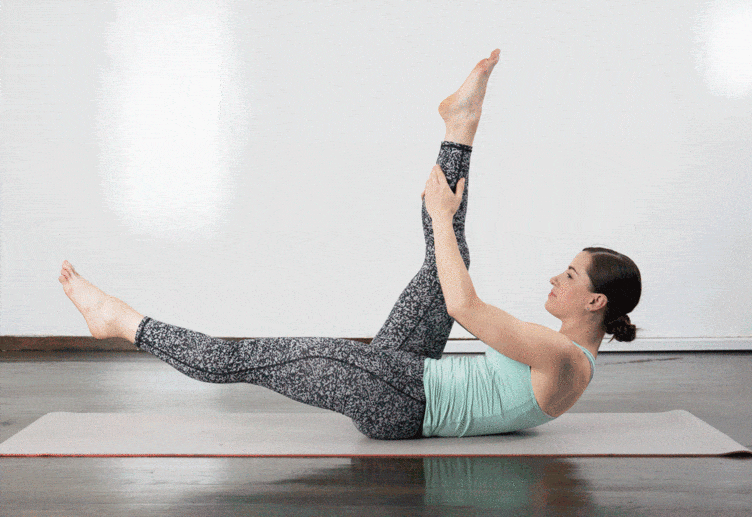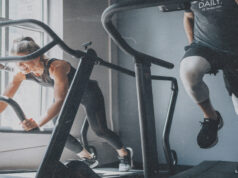Several scientific studies have shown that exercise is good for both physical and mental health. When some people hear the word exercise, what enters their mind is running several miles, lifting weights of hundreds of pounds, rowing on a stationary machine or cycling on stationary bikes. But this is far from the truth.
There are other types of workouts that do not require rigorous training and one of them is Pilates. Before delving into what Pilates is all about, it would also be helpful to learn other factors related to this form of fitness.
Pilates and Depression
Pilates is a low impact exercise that is designed to improve the state of the body and the mind. In fact, these moves are known to improve one’s mood and mental state. The movements focus on one’s core such as the abdomen, the butt, the obliques, the lower back, the inner and outer thighs, and a lot more. The exercises can be performed at home and do not require lots of workout equipment. However, there are also Pilates classes which are being offered to fitness buffs who want to learn the techniques from a certified Pilates instructor.
Although Pilates is not the main cure for depression, it somehow helps in reducing the problem.
Everyone has experienced feeling sad and down for no reason at all. You feel like your body is too heavy to move. You think that no one cares for you anymore and that life is not worth living. This feeling can last for a few hours to a few days. Some people would refuse to get up for days because they feel that they are useless. This is known as depression and if you cannot fight it, it can make your life and that of your loved ones miserable.
There are several ways by which Pilates can improve your mood and mental health. Performing these exercises can bring calmness to your mind and body. If you feel that everything is well, your mood is lifted up and you feel happy. Pilates exercises facilitate the production of endorphins, dopamine, and serotonin. These hormones are responsible in promoting light and happy mood. They are released when you do certain exercises, especially the Pilates. The more you engage in the workouts, the more you feel calm and relaxed. When these hormones are released, depression is most likely inhibited.
Pilates exercises have been known to be excellent stress relievers. As you focus on performing the routine, you forget the problems that have been nagging you for days. Once you get that good feeling, you can think clearly and find ways to deal with them so that they would not stress you anymore. While most of the Pilates exercises can be done at home, if you want to be guided through the steps, you can visit trusted physiotherapy clinic so that you can learn Pilates classes given by professional physiotherapists.
Since they are certified to conduct Pilates classes, you can expect positive results from the program. So what are the Pilates exercises that can enhance your mood and your mental health? Here are the 5 best routines that can make you feel good about yourself and take a positive look at life.
Breathing exercises
Breathing exercise is the first and easiest step in preparing yourself to undergo the Pilates program. Inhale deeply and feel your rib cage expand. Your rib cage would move out ward when you breathe in and contract when you exhale. The belly should remain still when you inhale so that you are doing it towards your side and back. This exercise has several benefits. By inhaling deeply, lots of oxygen rush into your body and when you exhale, you get rid of the stale air and carbon dioxide that are harmful to your body. It stimulates the heart and improves circulation. For Pilates advocates, this breathing exercise detoxifies and cleanses the body and improves the respiratory tract at the same.
The Bridge
This Pilates exercise is an excellent way of strengthening certain parts of the body particularly the butt, the back, legs, and thighs. It is used by physiotherapists to help people who have had back injury or who have a weak back to regain their strength and stability.
The steps are as follows: Take the neutral spine position, with your feet flat on the floor and your knees bent. Breathe in deeply while keeping your torso still. Then exhale. Push your body up so that your body makes a straight line from your shoulders to your knees. This exercise makes it easy for you to move your spine. It gets rid of the stiffness which sometimes makes it painful every time you move. Once your spine can move easily, the muscles around the vertebrae are always open so that the nerves do not come under too much pressure.
Body Roll-Up
Finally, do the body roll-up. Lie on your back flat on the floor. Raise arms to the ceiling and inhale, then, curve your body upwards and reach your toes with your hands. Exhale and slowly straighten your body into the mat. Repeat several times. By doing roll-ups, blood circulation in the body is improved and your spine becomes stronger. It becomes flexible and properly aligned. When you do this, you turn your attention to your spine and focus on what you are doing. You coordinate your breathing with the moves you make so that you reach the meditative state. This works out the core of your mind and makes you feel positive.
It is worth noting that Pilates can provide positive results when done consistently. If you are feeling down and depressed, try these Pilates exercises to get rid of your negative vibes. They will take away your focus on your problems and sadness and turn it to the parts of your body that you are targeting when you exercise. In the end, you are actually improving two aspects of your well-being which are the mental and physical.












